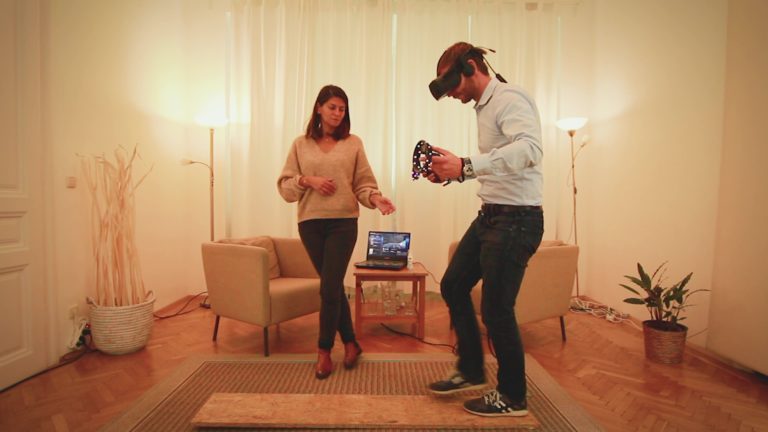What is Virtual Reality Therapy?
In VR therapy, patients move through virtual environments using VR headsets. These environments can cause patients anxiety. This happens in scenarios in which, for example, a spider crawls across a table or patients are supposed to give a lecture in front of an audience. Through the confrontation with the fear stimulus, patients learn how to deal with these situations in everyday life. This approach works also with addictions and other mental disorders.

The therapists can assist during these virtual confrontations. In addition, the confrontation can be gradually increased via the therapist software on the desktop. This applies to, for example, the size or number of spiders, or the reactions of the audience during a lecture. In all of the scenarios there is something that therapists can control.
The advantages and effectiveness of VR therapy have been proven in numerous publications and studies. For example, one study found that VR therapy achieves equally good results compared to the very expensive In Vivo therapy, but at the same time has fewer discontinued treatments.
- Quick implementation
- Less therapy discontinuations
- Time consuming and costly
- More therapy discontinuations
The Advantages of Virtual Reality Therapy:
- Numerous exposures within the practice rooms are possible
- Low organizational effort
- Realistic experiences for the patients
- Fewer discontinued treatments and therefore more success
- More safety during the exposure due to a better controllability
In the past, complicated operation was considered a disadvantage, which is why this therapy was only on offer by pioneers for a long time. Thanks to the new VR Coach® smart system, virtual reality therapy with state of the art functions can be implemented in clinics and private practices very quickly.
This offers the following advantages for owners of clinics and private practices:
- New variety of topics for your therapies
- Highly effective form of treatment as a new offer
- The possibility to stand out from other practices
- To win new patients
- To win new staff more easily



